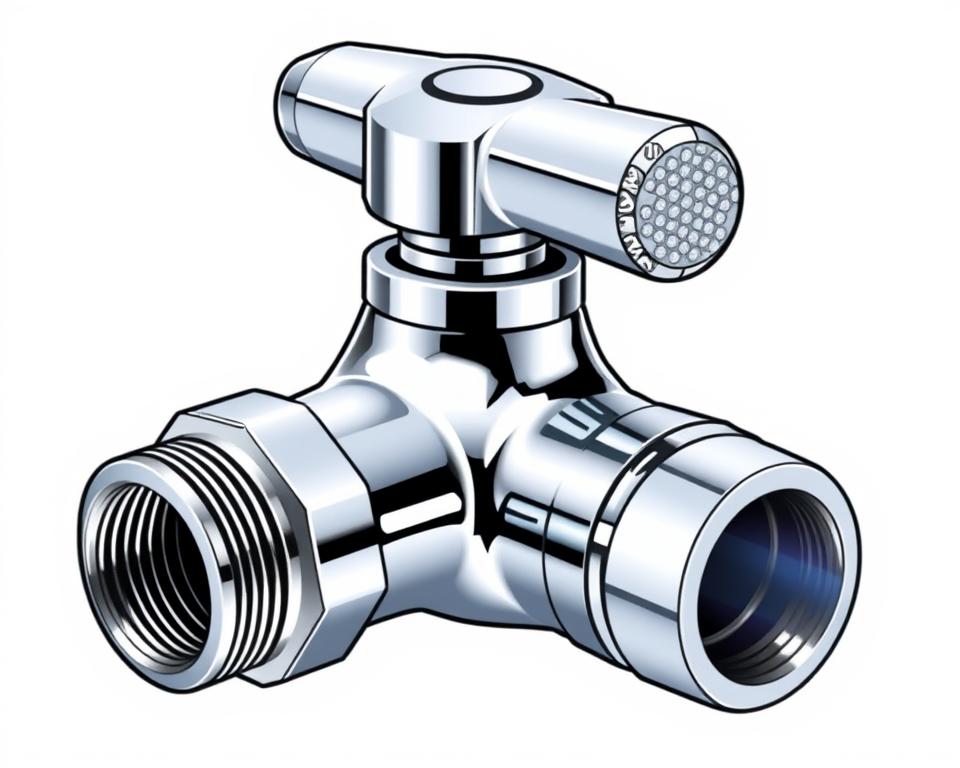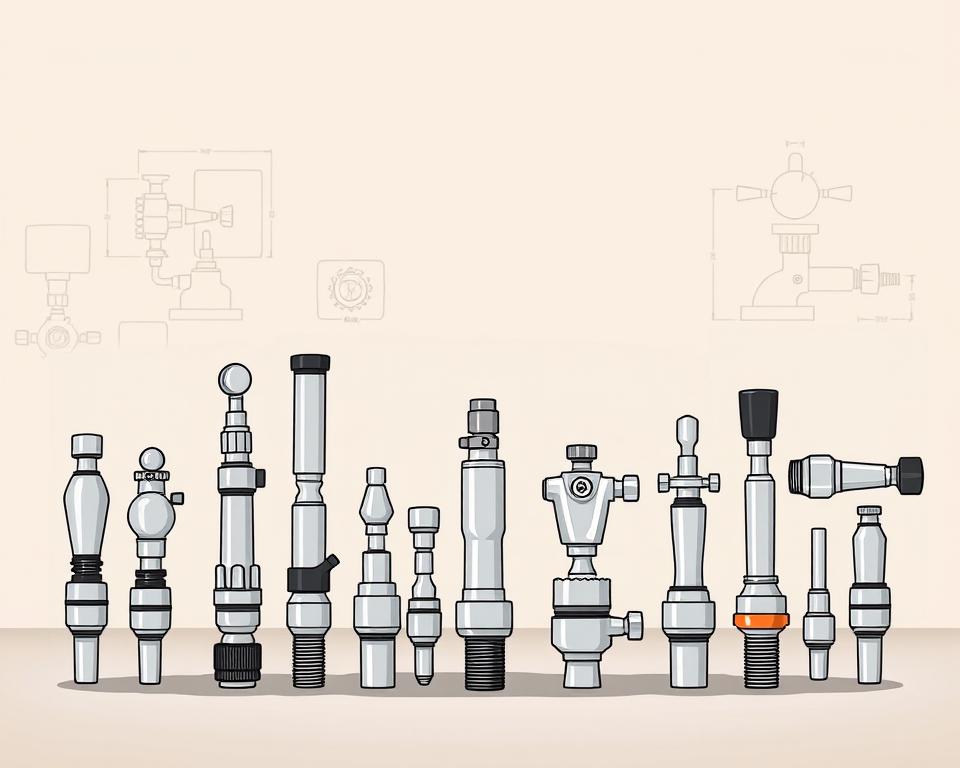Examining Breakthroughs in Alloy 3D Printing Tech
The global market for 3D printable metal is forecasted to soar to $7.9 billion by 2028. This significant increase is propelled by substantial improvements in alloy 3D printing tech. These advances are transforming how we create intricate parts and frameworks. Fields such as aviation and healthcare are at the forefront, leveraging 3D printing alloy to manufacture complex, tailored parts with unmatched precision.
This piece examines the advanced technologies fueling this transformation. It highlights how 3D printer metal printer is essentially changing production methods. By examining these advancements, we understand into the trajectory of fabrication and the immense potential of this innovation.
Understanding Metal 3D Printing
Metal 3D printing is transforming the manufacturing sector by facilitating the fabrication of intricate metal parts with unparalleled accuracy and adaptability. This technology facilitates for the incremental building of intricate components, offering significant advantages over conventional methods.
What is Alloy 3D Printing?
Alloy 3D printing, or metal 3D printing, utilizes various methods to produce alloy parts. A 3D printer alloy printer functions by depositing substance sequentially, straight from digital models. This technique facilitates the fabrication of intricate geometries and tailored patterns.
The History of Alloy 3D Printing
The history of metal 3D printing began in the late 1900s with early models of basic designs. Over time, progress have broadened its abilities, shifting from rudimentary models to high-performance parts. Today, alloy 3D printing is utilized in aviation, automotive, and medicine sectors, thanks to ongoing advancements.
Key Benefits of Metal 3D Printing
Using a alloy 3D printer provides various benefits over traditional manufacturing methods. These include:
- Creativity: The ability to produce complex shapes and elaborate geometries that conventional techniques cannot achieve.
- Lowered Waste: Alloy 3D printing employs substance efficiently, minimizing material loss during the fabrication process.
- Customization: Easily create tailored parts, enabling quick model development and customized outcomes across diverse applications.
- Velocity: Faster production times from design to finished item, optimizing the manufacturing process.
These advantages make alloy 3D printing a appealing choice for businesses aiming to improve and boost their fabrication potentials.
The Progression of Alloy 3D Printing Technologies
The development of alloy 3D printing has been nothing short of remarkable, progressing from rudimentary origins to the advanced techniques we now witness. This journey has centered around enhancing the intricacy of *metal 3D printed pieces*, improving the utilization of *3D printing metal powder*, and expanding the availability of *metal 3D printing service* companies.
Initial Developments
At its beginning, alloy 3D printing was marked by trial approaches and a limited range of substances. The earliest notable advancements were selective laser melting and electron beam fusion. These methods paved the way for more reliable manufacturing of alloy components. Early adopters utilized these methods to produce intricate geometries that conventional production techniques couldn’t handle.
Contemporary Trends in Technology
Nowadays, the advancements in alloy 3D printing are transforming manufacturing. The emphasis is on accelerating printing methods, enhancing material traits, and cutting expenditures. The production of advanced *3D printing alloy powder* has made it possible to manufacture durable and accurate *metal 3D printed components*. Furthermore, the expansion of *metal 3D printing provider* companies has rendered sophisticated production accessible to companies of all types.
Powder Bed Fusion Technologies in Alloy 3D Printing
PBF techniques have changed alloy 3D printing, providing superior accuracy and exceptional substance compactness. This method uses a laser to fuse fine alloy powders, including the cutting-edge metal-based powder fusion technology. It excels in creating complicated geometries that classical production methods cannot attain.
Two main Powder-Based Fusion methods are notable: Laser Sintering and Direct Metal Laser Sintering. Each provides specific advantages and is essential in sectors like space, automotive, and healthcare manufacturing.
- Laser Sintering: Using a high-power laser, it completely fuses the metal powder, creating pieces with excellent material traits.
- Direct Metal Laser Sintering: This method employs a beam to selectively fuse alloy grains, ideal for producing pieces with intricate internal structures and high detail.
Direct metal laser sintering is preferred for complex patterns and swift prototype creation, ensuring efficiency without sacrificing precision. Although PBF methods have significant expenses and slower manufacturing speeds, their accuracy and material efficiency are driving their implementation across sectors.
Here is a in-depth comparison:
| Aspect | Selective Laser Melting | Direct Metal Laser Sintering |
|---|---|---|
| Type of Laser | Intense beam | Fiber laser |
| Material Efficiency | Superior | Moderate to High |
| Operational Versatility | Extremely versatile | Exceptionally adaptable |
| Primary Sectors | Aviation, Automotive, Healthcare | Aerospace, Vehicle, Medical |
| Typical Materials | Aluminum, Titan, Alloy Steel | Al, Ti, Steel |
Both metal-based powder fusion methods are evolving, promising enhanced efficiency and material properties. As tech progresses, the potential of Powder Bed Fusion in metal 3D printing is expected to grow, fueling advancement across various industries.
Applications of Selective Laser Melting
Laser Sintering has revolutionized the metal 3D printing sector, delivering unequaled exactness and versatility. It facilitates the production of complicated constructions with effortlessness. This section explores how SLM is utilized across various fields, showcasing its substantial effect.
SLM in Aerospace Field
In aerospace, Laser Sintering is crucial for creating detailed engine parts such as turbine components and fuel tips. It facilitates for notable weight reduction while ensuring structural integrity. This results in improved and reduced weight aerospace vehicles.
By enhancing energy efficiency and lowering carbon output, Selective Laser Melting supports green initiatives in the space industry.
Uses in Medicine of Laser Sintering
The medicine sector substantially benefits from Selective Laser Melting, especially in creating personalized medical devices and prosthetics. Healthcare providers can now develop devices personalized to specific patients, guaranteeing a enhanced compatibility and functionality. This leads to better medical outcomes.
Tailored implants, such as those for orthopedic and tooth needs, are created to match the individual body of each person. This shows the versatility of alloy 3D printing in improving healthcare.
| Sector | Uses | Benefits |
|---|---|---|
| Space | Engine parts, turbine blades, fuel nozzles | Mass reduction, enhanced fuel economy, better operation |
| Medical | Custom implants, replacement parts | Individualized medical treatment, better fit and performance, reduced recovery time |
Advantages of EBM
Electron Beam Fusion is a cutting-edge method in alloy 3D printing. It utilizes a concentrated beam of electrons to fuse alloy particles in a vacuum. This process offers numerous major benefits.
Decreasing Material Oxidation:
One significant gain of Electron Beam Fusion is its operation in a vacuum, which greatly minimizes oxidative degradation. This is crucial for materials like titanium and its combinations. These are vital in space and healthcare applications due to their susceptibility.
Augmented Material Characteristics:
Operating in a vacuum not only maintains the substance uncontaminated but also enhances its mechanical properties. EBM-produced components often exhibit better tensile strength and endurance. These properties are vital for implementations under intense pressure.
Intricate Design Capabilities:
EBM excels in manufacturing intricate patterns and elaborate forms. The precision of the electron ray allows precise and customized parts. This is more than what traditional production can achieve.
| Aspect | Advantage |
|---|---|
| Oxidation Reduction | Decreased oxidation due to vacuum operation |
| Material Purity | Improved resulting from vacuum environment |
| Material Traits | Improved material strength and fatigue resistance |
| Design Adaptability | Capability to manufacture detailed and customized parts |
Electron Beam Fusion’s employment of electron beams in a vacuum chamber leads to high-quality metal components. These components have decreased oxidation and enhanced mechanical properties. This renders EBM essential in sectors requiring accuracy and durability, such as space and medical implant manufacturing.
Trailblazing DMLS
Laser-Based Sintering has changed the alloy 3D printing field. It utilizes a powerful light source to fuse metallic powder sequentially, creating intricate pieces without traditional templates. This process is notable for its exactness and productivity.
DMLS Material Requirements
For Laser-Based Sintering, substances must fulfill precise standards for peak performance. Key alloys involve Al, Ti, alloy steel, and cobalt-chrome alloys. These substances need uniform particle size, excellent temperature traits, and elevated melting temperatures to tolerate the powerful laser energy.
- Powder Consistency: The alloy grains must be uniformly sized and designed for accurate sintering.
- Heat Characteristics: Substances must optimally conduct and manage temperature to fuse and stabilize appropriately.
- High Melting Points: Ensuring strength during the fusion process eliminates imperfections.
DMLS vs. Traditional Manufacturing
When juxtaposing DMLS to traditional production, DMLS delivers clear gains. It can produce intricate shapes, cut down on waste, and significantly reduce fabrication periods. For complex patterns and prototypes, Laser-Based Sintering offers unmatched flexibility and accuracy.
| Element | Direct Metal Laser Sintering | Conventional Manufacturing |
|---|---|---|
| Intricate Shapes | Superior | Restricted |
| Waste | Minimal | Substantial |
| Production Time | Short | Extended |
| Tailoring | Exceptionally Versatile | Constrained |
By embracing Direct Metal Laser Sintering, sectors can achieve notable efficiencies and improvements in product creation and fabrication. This innovation is paving the way for a novel age of progress.
Outlook of DED
Looking ahead, Energy-Based Deposition is set to change fabrication. Its capacity for rapid material placement and the potential to augment or repair components marks a significant change. This tech is set to profoundly impact sectors like heavy industry and power.
Direct Energy Deposition facilitates the repair of components that have deteriorated, thus prolonging the life of crucial devices. This is particularly valuable in fields relying on industrial machines, where alternate parts can be both time-consuming and pricey.
The versatility of DED in handling multiple alloys makes it a ideal choice for tailored manufacturing results. It provides accuracy and effectiveness to the table, creating new avenues in product innovation and design.
Here’s a comprehensive examination of the benefits Energy-Based Deposition provides in various sectors:
| Sector | Gains from Energy-Based Deposition |
|---|---|
| Large-Scale Manufacturing | High deposition rates, repair and refurbishment capabilities |
| Power | Servicing, lengthened part life, and expense savings |
| Space | Custom manufacturing, lightweight components, exactness |
| Medical | High precision, biocompatible materials, swift prototype creation |
In conclusion, the development in Direct Energy Deposition indicates a bright prospects. It guarantees to enhance production effectiveness and enhance resource utilization, maintaining Energy-Based Deposition at the cutting edge of production tech.
Alloy 3D Printing Advancements in Car Industry
Alloy 3D printing is revolutionizing the car sector, introducing innovative innovations to auto design and manufacturing techniques. This tech allows the creation of personalized parts, transforming classical production processes.
Influence on Auto Design
Automotive designers now leverage metal 3D printing to create complex and reduced-weight structures. This adaptability allows for the creation of custom pieces that enhance car performance and appearance. Importantly, complex geometries that were once impossible or prohibitively expensive are now attainable.
Enhancements in Production Efficiency
3D printing technology substantially improves production efficiency in the car field. It cuts the demand for numerous assembly stages, streamlining production lines and minimizing waste and manufacturing periods. Furthermore, swift prototype creation is made possible, allowing faster iterations and swifter market entry for new designs.
The advantages of 3D printing in automotive parts are evident: improved accuracy and reduced material usage. These gains result in significant expense reductions and operational efficiency across the sector.
Jetting Process: A Significant Advancement in Metal Additive Manufacturing
Jetting Process signifies a major step forward metal 3D printing, providing numerous gains for commercial purposes. This process, which places a 3D additive alloy binder sequentially, greatly reduces production time over conventional methods. Its cost-effectiveness is remarkable, appealing to manufacturers aiming to reduce expenses without sacrificing accuracy.
Yet, it’s crucial to recognize specific drawbacks. Early components may show reduced compactness and resilience. To reduce this, supplementary processes like sintering can be applied. These actions enhance material properties, matching them with those possible through other alloy 3D fabrication methods.
Even with these compromises, Binding Technology’s benefits, notably in terms of speed and cost, are substantial. By adopting a 3D manufacturing metal adhesive into their processes, companies can achieve significant gains. This positions them at the leading edge of production advancement.
Growth with Large-Scale Metal 3D Printing Devices
New big alloy 3D printing machines are revolutionizing the manufacturing of complicated, large-scale pieces across sectors. These printers provide immense potential but also introduce specific challenges. Addressing these obstacles is vital to fully leverage their abilities.
Challenges of Large Format Printing
One significant hurdle with large-scale alloy 3D printing devices is maintaining exactness over massive spaces. As fabricated pieces increase in scale, maintaining consistent precision and structural integrity becomes more complex. Prolonged print times for big components also bring factors that challenge the fabrication method.
- Exactness and Precision: Ensuring exactness over bigger spaces is difficult, often needing advanced calibration and supervision processes.
- Printing Velocity: Larger components take longer to fabricate, which raises the risk of defects and the requirement for better monitoring techniques.
- Material Handling: Processing the extensive quantities of alloy particles or feedstock required for these printed items presents organizational obstacles in material storage and management.
Sectors Gaining from Large-Scale Printing
Various sectors will substantially benefit from big metal 3D printing machines, especially those demanding massive, detailed pieces. The capacity to 3D fabricate big items on-demand offers significant logistical and economic advantages.
| Industry | Advantages | Applications |
|---|---|---|
| Construction | Decreased fabrication periods, Personalization | Construction parts, Structural frameworks |
| Marine Construction | On-site manufacturing, Financial effectiveness | Boat hulls, Propulsion parts |
| Energy | Long-lasting component fabrication, Shorter idle periods | Pipeline fittings, Drilling equipment |
These cases demonstrate the broad capabilities uses of large format metal 3D printing devices across various fields. As innovation advances, it will be interesting to witness how 3D fabricating large components will more transform these sectors.
Advancements in Materials in Metal 3D Additive Manufacturing
The metal 3D additive manufacturing sector is evolving quickly, driven by advancements in materials. New alloy particles and composites are driving this development, substantially boosting the innovation’s abilities and uses. Global businesses are investing funds into R&D to reveal novel materials for multiple industrial uses.
A major jump in 3D additive manufacturing alloys innovation is the appearance of unique alloy combinations. These alloys offer enhanced strength, thermal stability, and corrosion resistance. Such breakthroughs are vital for sectors like aviation, car, and medical industry, where strength and efficiency are critical. Additionally, tailoring these alloys for individual requirements provides unparalleled versatility and efficiency in manufacturing.
To illustrate the breadth and advantages of material innovations in metal 3D fabrication, consider the comparison below, which outlines major innovations and their implementations:
| Material Innovation | Notable Traits | Industry Applications |
|---|---|---|
| Titanium-Based Compounds | Reduced weight, high strength, oxidation resistance | Aerospace, medical implants |
| Nickel-based Superalloys | Thermal stability, durability | Energy production, automotive, aviation |
| Aluminium-Based Compounds | Lightweight, high corrosion resistance | Car, aerospace |
| Alloy Steel | Robustness, hardness, corrosion resistance | Healthcare equipment, food manufacturing, vehicle |
These examples demonstrate the major influences of advancements in materials on 3D additive manufacturing alloys progress. As these breakthroughs advance, they are expected to change conventional fabrication, allowing complex shapes and customized material properties.
Custom Metal Parts: Revolutionizing Manufacturing
The capacity to create personalized metal pieces through 3D additive manufacturing is revolutionizing fabrication. This innovation offers unmatched 3D additive manufacturing personalization potentials. It enables industries to produce intricate patterns and personalized parts easily.
Tailoring Potentials
3D printing customization provides a major benefit by enabling pieces personalized to particular demands. Unlike traditional methods, 3D printing allows for rapid prototyping and modifications. This adaptability is crucial for sectors needing precision and uniqueness in their pieces.
- Design Freedom: 3D printing enables complex shapes and detailed designs that are challenging to attain with classical processes.
- Rapid Prototyping: Enables rapid shift from design to prototype, leading to faster revisions and a decreased release period.
- Cost-Effective Production: Reduces waste and material costs by producing only what is demanded.
Industries Utilizing Custom Metal Parts
Several industries are utilizing tailored metal parts through 3D fabrication tailoring to boost their products and methods:
- Healthcare: Personalized alloy components are employed to create patient-specific medical devices and artificial limbs, boosting comfort and compatibility.
- Car: Fabricators employ 3D additive manufacturing to develop lightweight, robust components that boost auto efficiency and energy economy.
- Consumer Items: Companies can manufacture bespoke items customized to specific preferences, delivering a one-of-a-kind customer benefit to consumers.
The integration of custom metal pieces and 3D additive manufacturing personalization is driving multiple industries into a modern epoch of fabrication advancement and productivity.
Economic Impacts of Alloy 3D Fabrication Service Businesses
Alloy 3D additive manufacturing solutions are transforming production with their adaptability and cost-efficiency. They significantly reduce down on capital and lead times, associated with classical manufacturing. This allows for the rapid and economic creation of intricate alloy components, speeding up development periods.
One significant advantage of metal 3D printing is its waste reduction. Conventional processes often lead to substantial material waste. In opposition, 3D printing layers substance incrementally, cutting down on scrap. This not only cuts manufacturing expenses but also has a positive environmental impact.
Expense reductions are another gain, thanks to the capacity to manufacture components on demand. This method removes the requirement for big warehouses, freeing up money for other ventures. It’s especially beneficial for sectors needing tailored or small-batch pieces, like space and medical fields.
The monetary effect of alloy 3D printing also involves workforce expansion. As need for these solutions expands, so does the requirement for trained personnel. These roles include running 3D printing devices, processing final touches, and supervision. This expansion supports the workforce and promotes economic development.
These benefits are evident when comparing traditional production to alloy 3D printing:
| Aspect | Conventional Fabrication | Alloy Additive Manufacturing |
|---|---|---|
| Initial Funding | High | Reduced |
| Manufacturing Period | Lengthy | Quick |
| Waste | High | Low |
| Customization | Constrained | High |
The monetary effect of metal 3D additive manufacturing is also seen in its market edge. Firms using these offerings can swiftly introduce products to market, responding swiftly to customer preferences and fashions. This flexibility is crucial in today’s rapidly changing economic environment.
The expansion of alloy 3D additive manufacturing offerings is reshaping economic models, allowing more productive, expense-efficient, and progressive manufacturing techniques. As this innovation develops, its financial influence will likely expand, further reshaping manufacturing techniques and economic trends.
Eco-Friendly Approaches in Metal Fabrication
The move towards eco-friendly approaches is vital in the current rapidly changing production environment. Metal fabrication heads this change, offering approaches that drastically minimize waste and energy use. It enables a more efficient material management, from planning to final product phase.
One major advantage of metal additive manufacturing is its minimized waste. Conventional techniques often result in significant scrap, removing surplus material to shape the end result. Eco-friendly fabrication, however, creates items incrementally, employing only what’s needed. This method conserves resources and makes the manufacturing method greener, with reduced environmental impact.
Power savings is vital for manufacturers seeking to implement sustainable methods. Metal fabrication techniques are often more energy-efficient than conventional methods. The precision of green additive manufacturing minimizes the need for numerous production steps, thus cutting fuel usage. Plus, local production with metal 3D printers can lower the carbon footprint from logistics and logistics, boosting green practices.
To sum up, alloy 3D printing is setting the stage for a green manufacturing era. By embracing sustainable 3D printing, sectors can advance while saving the environment. As this innovation develops, it offers even more efficiency and a minimized green effect. This highlights the importance for these practices in contemporary fabrication.



